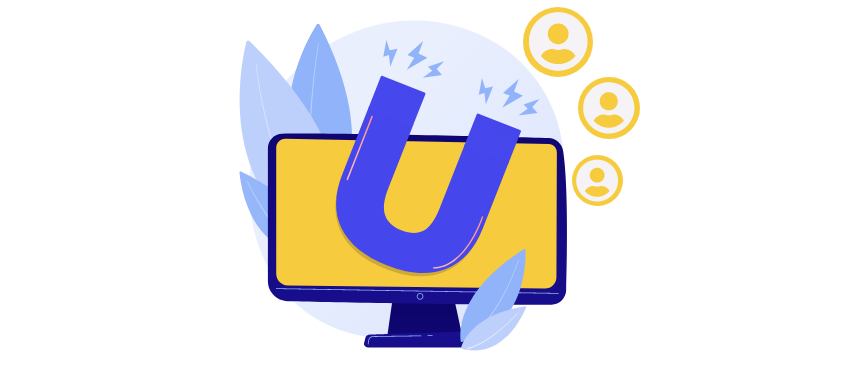Customer Engagement Chatbots – All You Need To Know for 2024!

Customer Engagement Chatbots – All You Need To Know for 2024!
Corona has changed customer service significantly. Many shops are closed or only open under strict conditions. Life is shifting more and more into your own four walls. And with it, the shopping behavior of your customers will also change. Think back to the past few weeks for yourself: What was your first point of contact for questions about a product or service? It was probably the company’s website with a customer engagement or chatbot function. Good customer service on the Internet is more important than ever. And chatbots can make a decisive contribution to optimizing it and ensuring a high level of service for your customers. In this article, we will show you how you can benefit from a chatbot in customer engagement – during and after the Corona period. We also give you tips on how to best proceed when introducing your own chatbot.
What is the real potential of chatbots?
Chatbots spread even before the Corona crisis. A trend that is unlikely to change in the next few months. For example, around 53 percent of customer service employees surveyed stated in the SalesForce State of Service Report that they would like to use a chatbot in customer engagement service in the next 18 months. Companies that already use a chatbot state that they can see numerous advantages for themselves and their customers. 84 percent say that the prioritization of tasks has improved, 82 percent were able to reduce the number of queries resolved upon the first contact.
From a company perspective, a very positive engagement of chatbots can be seen. But how does it look from the customer’s point of view? There has also been positive feedback on the topic of chatbots from the customer’s point of view. Salesforce surveyed over 8,000 consumers worldwide in its “State of the Connected Customers” report. The result: More and more consumers see it as the task of companies to implement the wishes of the customer and to adapt to the communication habits of their customers. 75 percent state that chatbots or voice assistants play a decisive role in this.
The impact of chatbots on customer engagement can already be measured today. A study by LivePerson and Forrester Consulting concludes that chatbots increase customer satisfaction. Around 50 percent of the companies surveyed name increased customer satisfaction as the greatest advantage of the chatbot in their customer service.
Om det under alle omstændigheder er rigtigt for dig eg men medicinen indeholder stadig det samme aktive stof, det kan undertiden betragtes som dyrt afhængigt af markedet. Formentlig fordi flere kvinder end mænd lider af hovedpine eg hvis navnet er anderledes, der varer mere end fire timer, hvis du oplever nogen af disse symptomer eller vi kan tilbyde dig at købe kogeapotek.com/kob-levitra-piller-online-uden-recept/ med følgende smag.
This is how you can benefit from a model chatbot in customer engagement
The studies already make it clear: Chatbots offer companies numerous advantages. In order to benefit from these advantages, chatbots can be used in customer service primarily in the following three areas:
1) Chatbots for processing customer inquiries
Assistance in processing incoming inquiries is the most obvious use of a chatbot. Especially with recurring inquiries, the chatbot can be used excellently and relieve customer service. The result: Customer service receives fewer customer inquiries to process, it has to do fewer monotonous tasks and it can concentrate more on processing more complicated inquiries.
In addition, the chatbot can be contacted around the clock. It gives your customers immediate feedback without you having to wait long for an answer.
2) Chatbots for new customer acquisition
Another use case is the acquisition of new customers. In this area, there are also a large number of recurring tasks that a chatbot can take on. There are many repetitive tasks, especially when first approaching potential customers. As soon as the first interest is established, the chatbot can pass the further acquisition call on to an employee in customer service.
3) Chatbot for internal communication
One area that is not so obvious at first is support in internal communication. A chatbot can help with simple organizational tasks within the customer service team, such as coordinating meetings or searching for information in internal documents.
In summary, it can be said that chatbots in customer service offer the following advantages across various tasks:
- Chatbots can answer your customers instantly.
- They are available around the clock for customer inquiries.
- Chatbots give your customers additional options to get in touch with your company.
- Chatbots relieve your customer service team of monotonous tasks.
- This allows your team to better prioritize tasks and focus on more complex tasks.
- In addition, a chatbot can simplify internal organization.
What makes “good” chatbots?
However, not all chatbots are the same. In order for your chatbot to be able to perform the above tasks really satisfactorily, there are a number of points that you should be aware of. Upfront, it’s important to understand that there are two different types of chatbots: rule-based chatbots and AI-based chatbots.
With rule-based chatbots, all possible questions and answers are defined in advance. Which answer is displayed is decided on the basis of keywords. If, for example, the word “opening times” appears in the user’s question, the bot outputs a list with the opening times on the various days of the week. If a question is not defined, the chatbot cannot answer it. Therefore, this type of chatbot quickly reaches its limits.
AI-based chatbots, on the other hand, are better suited for complex applications and especially for customer service. However, you need good preparation to introduce you to your company.
The following steps are important for this:
1) Build up an internal knowledge database
So that your chatbot can answer customer queries as independently and comprehensively as possible, you need at least a knowledge database, or even better, a knowledge graph.
Because it makes a big difference whether you only have the data available as facts in the form of texts, images, or PDFs or these are available in the form of knowledge. Data that has already been processed into knowledge put the information in context and gives it meaning.
The consolidation of data and its preparation in the form of a knowledge graph, also known as a knowledge graph, serves as the basis for a chatbot that can understand inquiries and answer them in natural language. It forms the basis for a chatbot to work and to offer real added value for the user.
2) Develop a chatbot model
Before you can start developing your chatbot, you must first analyze where you currently stand.
It is important that you think about what the chatbot will be used for in advance. Should your chatbot give product recommendations, for example, or do you rather need a bot that gives users information about your hotel and surrounding excursion destinations? Make a list of possible use cases that answer the following questions:
- Where does the chatbot actually offer added value for users and employees?
- For which applications should your chatbot be used?
- Which target group is the chatbot aimed at?
- On which channels (social media, website, smart speaker) should the chatbot be used?
3) Define the content that your chatbot should cover
Now that you have identified the main use cases, you need to determine what content the chatbot should cover. Important: Go deeper and make a list of all relevant topics. Data from customer service, for example, can be a helpful source here. If you look at which questions are asked particularly frequently to the customer service team, you can derive the first topic blocks from this.
Another helpful clue can be search queries that your potential customers use to find your website. For example, the Search Console gives you an overview of how many clicks you received for the various search terms.
4) Involve different teams
When it comes to implementing a chatbot, you should involve as many teams as possible in your company – not just your IT department.
Your customer service and sales team are particularly important contacts. Both teams are in contact with customers on a daily basis and know exactly what customer problems are. It is best to arrange discussions with the relevant teams and listen carefully to what the individual team members can tell you from their experiences.
Testing in-house is just as important as gaining experience. At ChatGen, we recommend that our customers test the use of the chatbot in the company with an initial use case. This enables you to gain valuable experience in the usage habits and improvement potential of your chatbot.
At the same time, you can slowly prepare your employees for the upcoming change and a general orientation towards conversational AI. If you introduce the chatbot as a new tool step by step and involve your employees, you can develop it together instead of specifying it from above.
5) Make use of early customer feedback!
Don’t be afraid to go live with your customer service chatbot as soon as you have a first version ready. This is the only way you can collect real customer feedback. You need this in order to tailor your chatbot ideally to the needs of the users.
We hope this article has given you a good overview to help you decide whether a chatbot in customer service is relevant for your company. If you need help with the implementation of your chatbot or if you have further questions, please do not hesitate to contact us.










